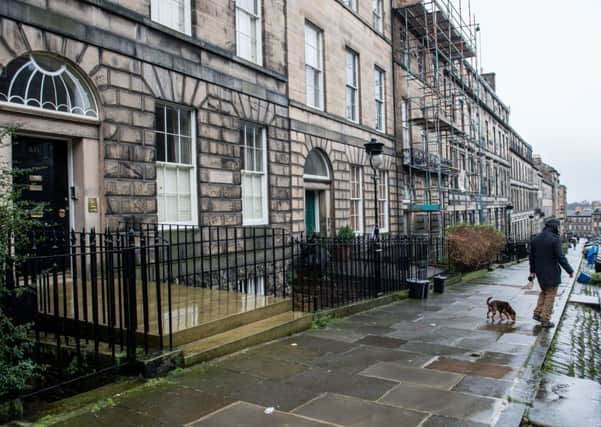Plaque for city scientist who inspired Einstein


The India Street house where James Clerk Maxwell – widely revered as the father of modern physics – grew up is now a museum charting his work.
Plans have been drafted for the new bronze plaque, which will include a QR code – which can be scanned by visitors on their mobile phone to access information about the great 19th century scientist.
Advertisement
Hide AdAdvertisement
Hide AdAs part of Unesco’s International Year of Light, the Scottish Government has also pledged £50,000 worth of funding to the country’s four main science centres – including Our Dynamic Earth – to help shape a curriculum of new courses teaching about Maxwell.
And plans are also in place to update the towering memorial to him on George Street with information about his life and work.
The developments have been scheduled to coincide with the 150th anniversary of Maxwell’s most significant work, A Dynamic Theory of the Electromagnetic Field, which was published in 1865.
The scientific paper included a handful of equations that are still taught in schools today, went on to inspire Einstein’s theory of relativity and paved the way for the inventions of radio, mobile phones and even colour photographs.
Professor Peter Grant, an OBE and former head of Edinburgh University School of Engineering, is behind moves to upgrade memorials honouring Maxwell.
“James Clerk Maxwell slots in right between Newton and Einstein as one of three of the greatest physicists of all time, and he’s very well-known,” he said.
“But here in Edinburgh, I don’t think enough is done to explain to the non-scientific community just how important Maxwell was.
“At 14 India Street, there’s an engraving in the building saying that this is where he was born – but it doesn’t explain why he should be remembered.The same can be said of the magnificent statue of Maxwell that the Royal Society of Edinburgh erected on George Street in 2008. Thousands of people pass by him every day, but some probably don’t have a clue why he’s famous.”
Advertisement
Hide AdAdvertisement
Hide AdMeanwhile, science centre Our Dynamic Earth is gearing up to organise a range of activities to teach children about Maxwell after the Scottish Government marked funding for the Unesco-led celebration of some of the biggest contributors to light-based technologies.
Maxwell was born in the India Street house in 1831 and won a host of notable prizes in his field. The poetry lover died in Cambridge at the age of 48 and is buried in Galloway.
Professor John Ritchie, president of the James Maxwell Foundation, said: “He truly is one of the greatest scientists who ever lived.
“Albert Einstein himself admitted that the special theory of relativity owed its origins to Maxwell’s equations of the electromagnetic field.
“He was a very, very influential mind.”